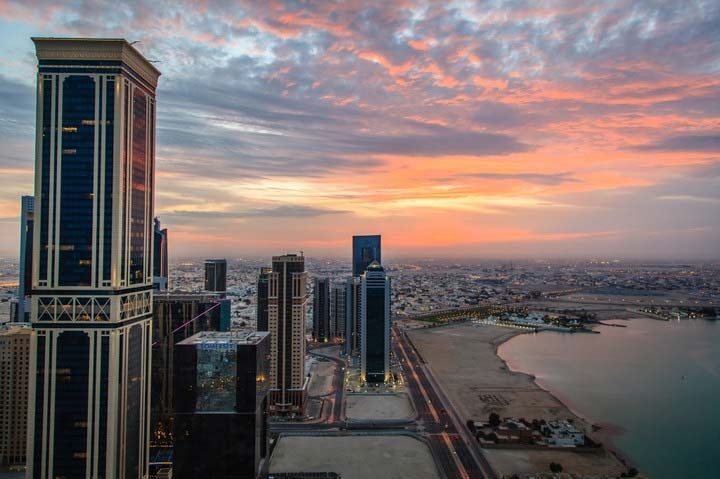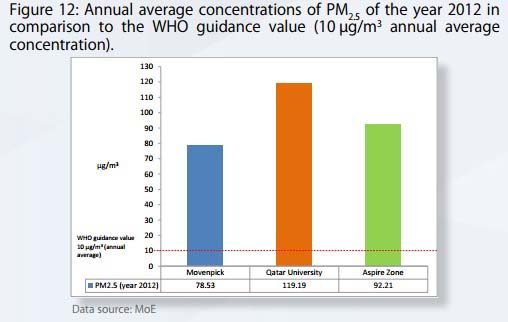Amid ongoing concern about air pollution in Qatar, a new environmental report shows harmful airborne particles exceeded recommended levels for 159 days of the year in 2012.
The Environment Statistics Annual Report 2013, recently issued by the Ministry of Development, Planning and Statistics, breaks down Qatar’s air quality levels from 2008 until its latest figures in 2012.
It follows data released by the World Health Organization earlier this year, which suggested Doha’s air is among the most polluted in the world.
Pollution
The WHO’s ambient (outdoor) air pollution in cities database 2014 examined air pollution levels in 1,600 cities in 91 countries.
It measures particulate matter, which are small and large droplets in the air. It concluded that Doha had the 12th highest average levels of small and fine particles, known as PM2.5, which can penetrate the respiratory tract and increase the risk of respiratory infections, lung cancer, heart disease and stroke.
According to the US Environment Protection Agency, these particles – which often cannot be seen with the naked eye – are made up of heavy metals and toxic organic compounds, and originate from vehicle exhaust, smelting plants and the burning of organic materials.
Larger particles – PM10 – are mostly caused by dust and smoke. In this category, Doha ranked just outside the top 30.
Standards
While the ministry’s recent report didn’t benchmark Qatar against other countries, it showed that local air pollution levels frequently exceed the WHO’s recommendations as well as Qatar’s own targets, which are more lax than the international standards.
For example, Qatar’s national air quality standards for PM10 are 150 ug/m3 for 24 hours average concentration and 50 ug/m3 for the annual average concentration.
By comparison, the WHO’s standards for PM10 are 50 ug/m3 for the 24-hour average – one third of Qatar’s target – and 20 ug/m3 for the annual average concentration, which is less than half of the national figure.
The MDPS report uses statistics from the Ministry of Environment, which measures air quality at three monitoring stations in Doha – at Qatar University, Aspire Zone and the Mövenpick Hotel on the Corniche.
Levels highest at QU
All three monitoring stations recorded pollution levels above the recommended national and global levels. However, concentration levels of the larger particulates (PM10) were highest at QU station in the north of Doha. That location also recorded the most days when air quality levels did not meet international standards.
 In 2012, the national quality standards were breached on 159 days, or 44 percent of the year.
In 2012, the national quality standards were breached on 159 days, or 44 percent of the year.
This is still an improvement from 2008, when the national standard of 150 µg/m3 for 24-hours average concentration was exceeded on 229 days – nearly two-thirds of the year.
The QU station also recorded the highest 24-hour average concentration of PM10 in March 2012, which was 2,214 µg/m3 – far above both the national and WHO recommended levels.
For the smaller and more harmful particles, figures recorded at the QU station show the annual average concentration was 119.19 µg/m3 – nearly 12 times the level recommended by the WHO.
The figures may be at least partly explained by Qatar University’s proximity to Lusail, where construction crews are undertaking massive infrastructure and development projects in preparation for the 2022 World Cup.
Previous government reports have said sand and dust generated by Qatar’s booming construction industry, as well as transportation emissions, are the primary causes of air pollution in Doha.
To tackle the issue, it recommended the development of strict guidelines “to manage discharge of greenhouses gases and air pollution, where all sects of the society should participate, including the private sector.”
Thoughts?









